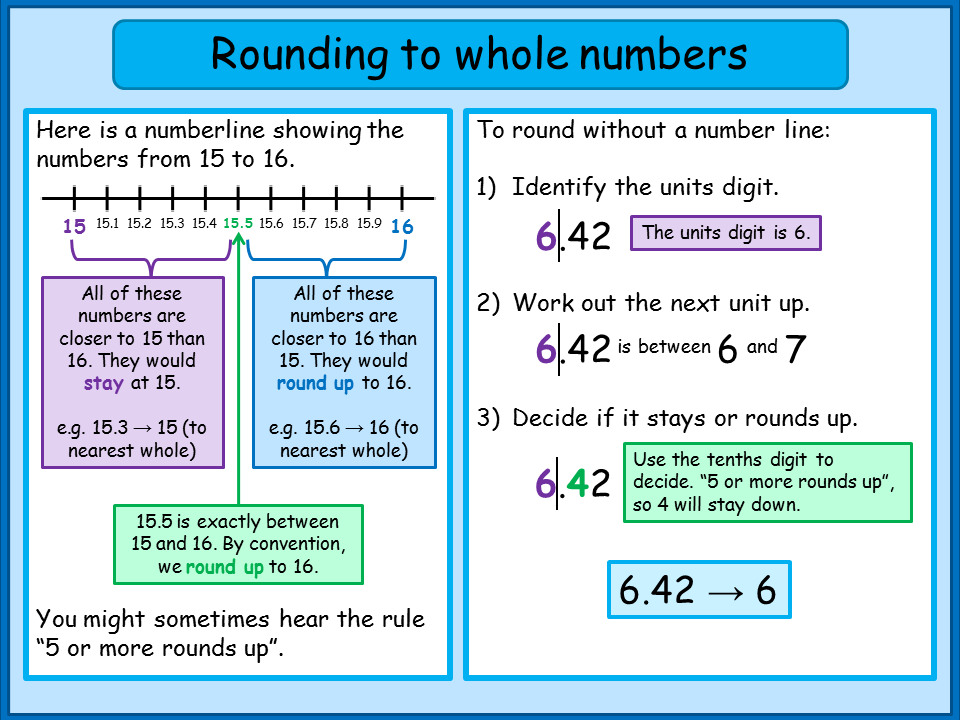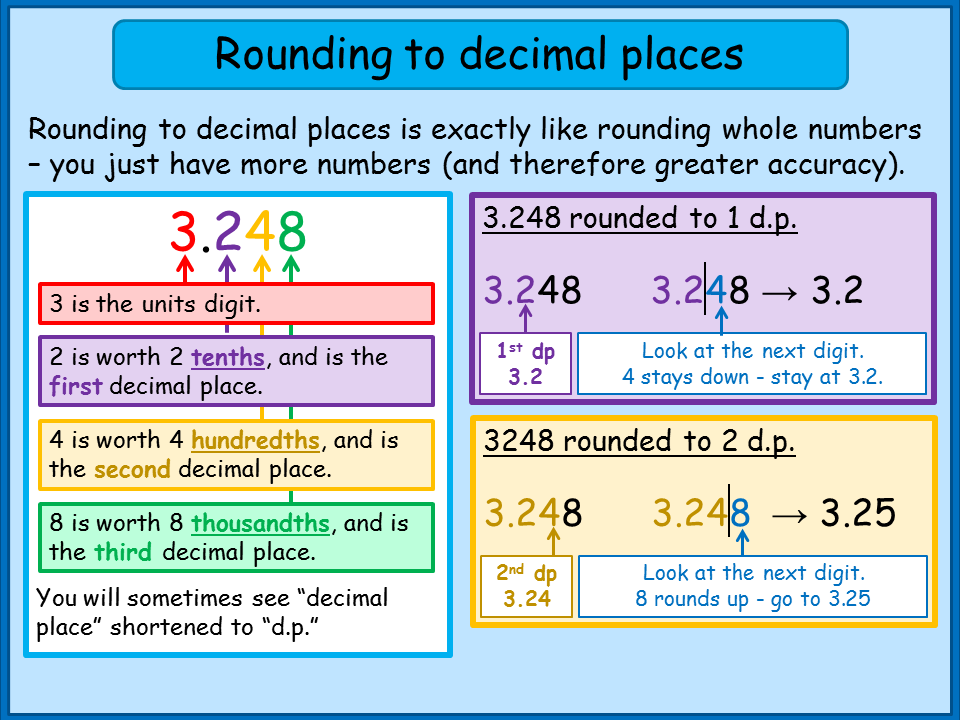Addition and Subtraction of Decimals
For addition/subtraction of decimals, we have to follow these steps:
Step 1: Change the given decimals into like decimals.
Step 2: Write the numbers in columns, so that decimal points should come in one column and tenths comes under tenths, hundredths comes under hundredths, and so on.
Step 3: Now, add or subtract the decimals, as we add or subtract the whole numbers.
Step 4: Put the decimal in the sum or difference directly under the decimal points of all the decimals.
Example 1: Add 3.85 and 2.5.
Solution: Converting into like decimals

∴ 3.85 + 2.5 = 6.35
Example 2: Subtract 41.715 from 63.2.
Solution: Converting into like decimals

∴ 63.2-41.715 = 21.485
Example 3: Add 41.8, 39.24, 5.01, and 62.6.
Solution: Converting into like decimals
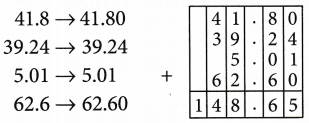
∴ 41.8 + 39.24 + 5.01 + 62.6 = 148.65
Example 4: Surajgot Rs 15.50 from his mother and Rs 30.05 from his father. How much money did he get?
Solution:

Example 5: The sum of two numbers is 100. If one of them is 78.67, find the other.
Solution:

Note:
- Fractions with denominators 10,100,1000, etc. are known as decimal fractions or decimals.
- Decimal number has whole number part and decimal part separated by a decimal point.
- Zeros to the extreme right side of the decimals does not have any value.
- Two decimals having the same number of decimal places are like decimals and decimals having different decimal places are unlike decimals.
- To add or subtract decimals, it is easier to convert them as like decimals and then add or subtract as we do for whole numbers.
Read More About:
- What is the meaning of Place Value and Face Value in Maths?
- What is the Place Value Chart of an Indian and International System?
- What is a Decimal Value and Place Value of Decimals?
- How do you Round to the Nearest Ten Thousand
- What is the Definition of an Equivalent Decimal
- Converting To and From Scientific Notation
- What is the Difference between Ascending and Descending Order
- How do you Multiply and Divide Decimals?
- How do you Convert Fractions into Decimals and Vice Versa
- How do you Convert Unlike Decimals into Like Decimals



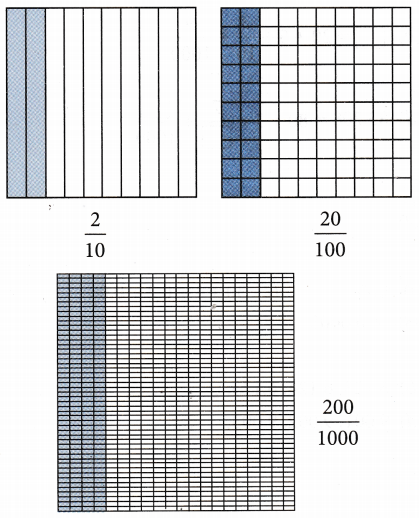

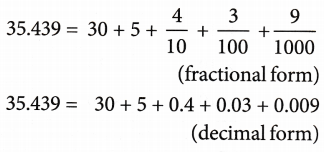
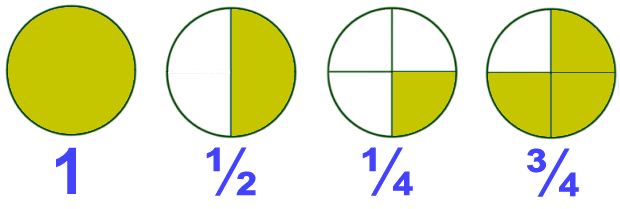

 They decide to cut the pizza from the middle and divide it into two equal parts. Each part is called
They decide to cut the pizza from the middle and divide it into two equal parts. Each part is called Similarly, we can take many examples from our daily life to show fraction as a part of a whole.
Similarly, we can take many examples from our daily life to show fraction as a part of a whole. In this figure we have divided a triangle into 3 equal parts. The shaded part shows one part out of three, i.e., \(\frac{1}{3}\). Here, \(\frac{1}{3}\) is a fraction, which is a part of the whole triangle.
In this figure we have divided a triangle into 3 equal parts. The shaded part shows one part out of three, i.e., \(\frac{1}{3}\). Here, \(\frac{1}{3}\) is a fraction, which is a part of the whole triangle. In order to find \(\frac{3}{4}\) out of the 12 stars, we divide the 12 stars into four equal parts.
In order to find \(\frac{3}{4}\) out of the 12 stars, we divide the 12 stars into four equal parts. Each part contains 3 stars. Now, we can shade 3 parts out of 4 parts.
Each part contains 3 stars. Now, we can shade 3 parts out of 4 parts.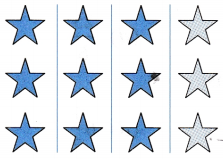 On counting, we find that the total number of shaded stars is 9.
On counting, we find that the total number of shaded stars is 9.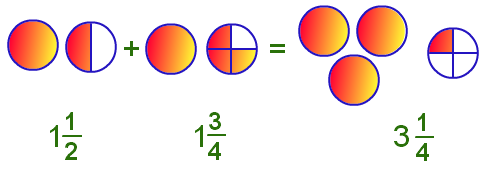


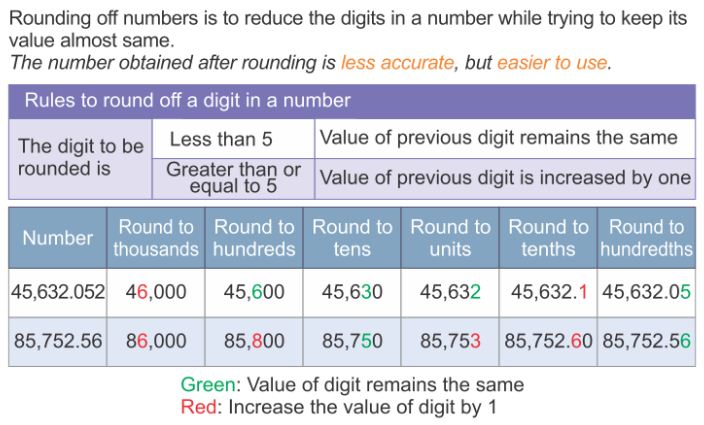
 Similarly, if we take a number say 16, then it is nearer to 20 as compared to 10. So, we will round off 16 to the nearest ten as 20.
Similarly, if we take a number say 16, then it is nearer to 20 as compared to 10. So, we will round off 16 to the nearest ten as 20. But if number 15 is considered, which is at equal distance from both 10 and 20, it is also rounded off to 20.
But if number 15 is considered, which is at equal distance from both 10 and 20, it is also rounded off to 20. Similarly,
Similarly,